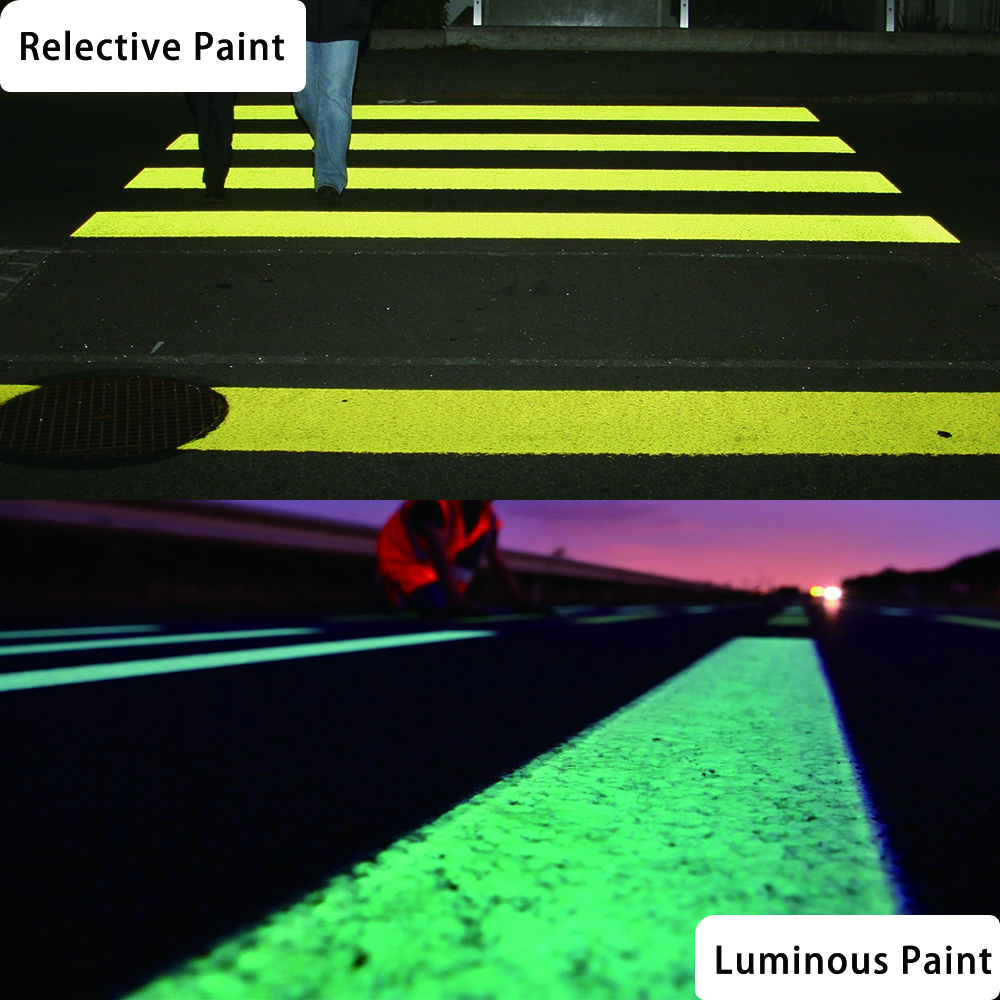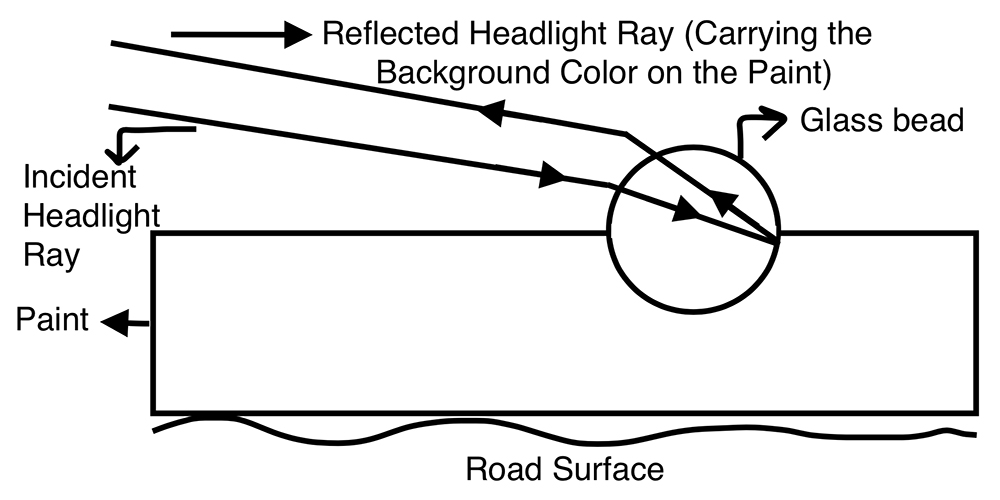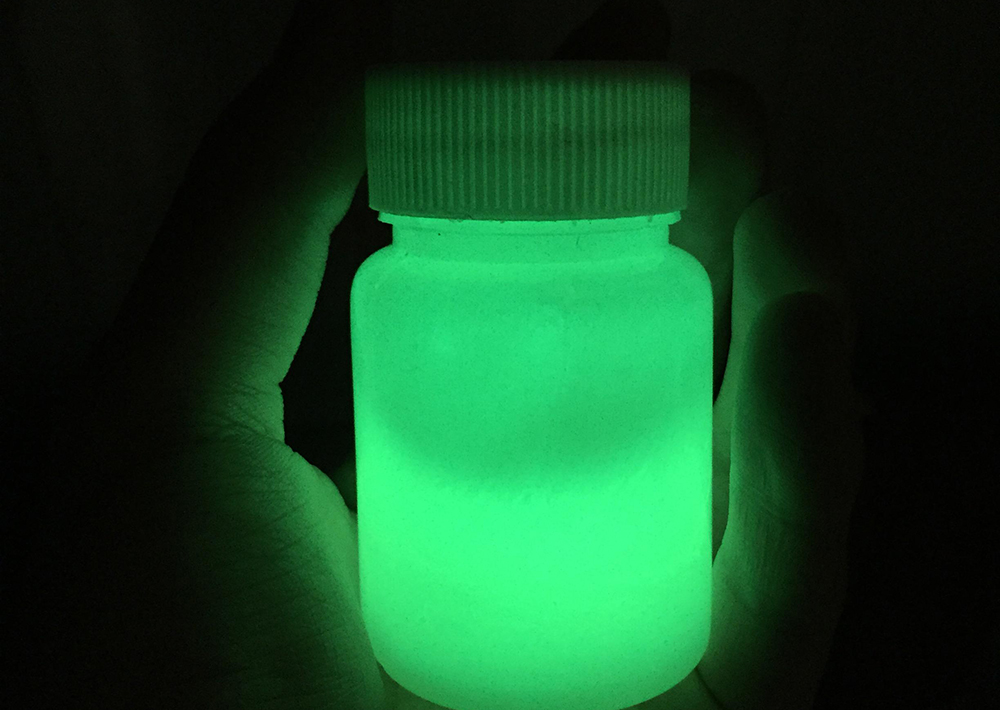 Traffic marking reflective paint and luminous paint are two special paints used for road marking. They all have the function of improving road visibility at night, but there are some differences in principles and applicable scenarios.
Traffic marking reflective paint and luminous paint are two special paints used for road marking. They all have the function of improving road visibility at night, but there are some differences in principles and applicable scenarios.
First of all, reflective paint for traffic markings mainly relies on the irradiation of external light sources to reflect light, making the markings clearly visible. This kind of reflective paint is usually achieved by the addition of particulate matter, which reflects light under the light source. It is suitable for environments with strong light exposure, such as daytime or nighttime with street lights. Reflective paint can make the marking more eye-catching under sufficient light conditions, reminding drivers to pay attention to road planning and safety.
In contrast, luminous paint is a fluorescent paint that radiates light and has the property of glowing in a dark environment. The luminous paint itself has an independent light source, which can continue to glow without external light source for a certain period of time. This allows the luminous paint to still provide clear visual effects in low light conditions. Therefore, luminous paint is suitable for road sections without street lights or in low light, which can help drivers better identify roads and markings.
In addition, traffic marking reflective paint and luminous paint also have some differences in construction materials. Traffic marking reflective paint is usually painted with a special substrate and then added with reflective particles. Luminous paint is achieved by adding certain fluorescent substances and phosphors. These fluorescent materials will emit fluorescence after absorbing external light, so that the luminous paint has the function of glowing at night.
To sum up, the difference between traffic marking reflective paint and luminous paint mainly includes principle and applicable scenarios. Reflective paint for traffic markings relies on external light sources to reflect light and is suitable for environments with strong light exposure; luminous paint provides clear visual effects through self-luminescence and is suitable for environments with insufficient light. The choice of paint should be based on road characteristics and visibility needs.
Post time: Aug-01-2023


